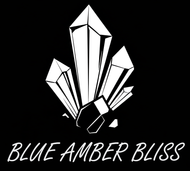Amber has captivated humanity for millennia with its warm glow and storied inclusions. In this article, I draw upon my experience as a GIA-trained gemologist to explain what amber is, how it forms, its many varieties—including the celebrated blue amber—and why it remains one of nature’s most intriguing gemstones.
1. Introduction: The Allure of Amber
Amber is not a mineral but fossilized tree resin that has hardened over millions of years. Its golden to honey hues have adorned jewelry, art, and religious artifacts since ancient times. Ranging from pale yellows to deep cognacs—and even the rare electric blue—the spectrum of amber’s beauty is as diverse as its history.
2. The Origins of Amber
2.1 From Resin to Gemstone
-
Tree Resin vs. Sap: Resin is a viscous substance produced by certain trees (notably conifers like pines) as a defense against insects and disease. Over geological time, this resin can polymerize and fossilize into what we call amber.
-
Geological Timeline: Most amber formed during the Cretaceous (about 100 million years ago) to the Eocene (about 40 million years ago). Layers of sediment buried the resin, where heat and pressure gradually transformed it into stable, gem-quality material.
2.2 Key Amber Localities
-
Baltic Amber: The most abundant and historically significant source, found around the Baltic Sea.
-
Sumatran Amber (Indonesia): Notable for producing blue amber, a phenomenon that glows under both sunlight and ultraviolet light.
-
Dominican Amber: Famous for it frequent insect inclusions.
3. Amber’s Physical and Optical Properties
| Property | Detail |
|---|---|
| Hardness | 2–2.5 on the Mohs scale |
| Specific Gravity | 1.05–1.10 |
| Refractive Index | 1.540–1.550 |
| Color Range | Yellow, orange, red-brown, green, and blue (rare) |
| Transparency | Transparent to opaque |
| Unique Feature | Electrostatic when rubbed (attracts small particles) |
-
Hardness & Durability: Amber is relatively soft; it scratches easily but can be polished to exceptional luster.
-
Electrostatic Effect: Rubbing amber with a cloth can produce static electricity—an effect known since antiquity and named after the Greek word for amber, “elektron.”
4. The Science Behind Blue Amber
4.1 What Makes Amber Turn Blue?
-
Fluorescence vs. Scattering: Blue amber’s captivating hue isn’t due to pigmentation but to the way it absorbs and re-emits sunlight. Under high-energy light (such as UV), certain organic compounds within the resin fluoresce in vivid blue. Under bright white light or direct sunlight, the same compounds scatter blue wavelengths more strongly.
-
Age and Composition: True blue amber tends to come from older deposits (like those in Sumatra) and contains trace amounts of aromatic hydrocarbons that enhance fluorescence.
4.2 Rarity and Value
-
Limited Deposits: Blue amber is far less common than traditional golden amber. Because it originates from specific Cenozoic resin sources, genuine blue amber commands a premium in the market.
-
Inclusions Enhance Value: Specimens with well-preserved insects or botanical inclusions set in glowing blue matrix fetch collectors’ prices.
5. Types and Varieties of Amber
-
Butterscotch Amber: Opaque, creamy yellow with a glowing, buttery appearance.
-
Cognac Amber: Deep brownish-orange, often used in high-end jewelry.
-
Green Amber: Contains chlorophyll residues or algae inclusions, giving it a natural green hue.
-
Blue Amber: Rare electric blue fluorescence under UV and daylight.
-
Inclusion-Rich Amber: Fossils of insects, plant fragments, and even air bubbles—nature’s time capsules.
6. Common Inclusions and What They Tell Us
-
Insects and Arachnids: Flies, ants, spiders, and even tiny wasps can be exquisitely preserved, allowing paleobiologists to study prehistoric ecosystems.
-
Plant Debris: Leaves, seeds, and bark fragments can reveal the type of forest that existed when the resin formed.
-
Air Bubbles & Water Droplets: These tiny pockets inform us about the resin’s original viscosity and the ambient environment.
7. Amber’s Uses: Beyond Adornment
-
Jewelry & Decorative Objects: Amber beads, cabochons, and carvings remain popular for both their visual appeal and tactile warmth.
-
Traditional Medicine & Aromatherapy: Some cultures believe amber releases succinic acid—a compound thought to soothe and relieve stress. Though unproven scientifically, amber oil and jewelry are frequently marketed for wellness.
-
Perfume & Incense: Historically, powdered amber resin was used in luxury fragrances; today, amber notes remain prized in perfumery.
8. How to Identify Genuine Amber
-
UV Test: Under ultraviolet light, genuine amber may fluoresce pale blue, yellow, or green—depending on type.
-
Saltwater Float Test: Amber’s low specific gravity allows it to float in a saturated saltwater solution (about 1 part salt to 2 parts water).
-
Hot Needle Test: A heated needle pressed lightly into the stone emits a pine-like aroma if it’s true amber (use caution; this can damage the piece).
-
Electrostatic Charge: Rubbing amber with a soft cloth may attract small paper bits—an effect not replicated by most imitations.
9. Amber in Jewelry: Crafting and Care
9.1 Setting Amber
-
Protective Settings: Because amber is soft, bezel and halo settings can shield edges from knocks.
-
Combining with Metals: Amber pairs beautifully with yellow gold, rose gold, and even sterling silver, accentuating its warm tones.
9.2 Caring for Your Amber
-
Avoid Chemicals: Keep amber away from perfumes, hairspray, and household cleaners to prevent dulling.
-
Gentle Cleaning: A soft cloth dampened with lukewarm water is all you need; never use ultrasonic or steam cleaners.
-
Proper Storage: Store amber jewelry separately in a soft pouch or lined box to avoid scratches.
10. Conclusion: Embracing Nature’s Time Capsules
Amber—whether golden or the rare electric blue—connects us to ancient forests and prehistoric life. Its warm, glowing presence in jewelry and art evokes a timeless beauty few other gems can match. As a GIA gemologist, I’ve witnessed firsthand the wonder that a single piece of amber can inspire. By understanding its origins, properties, and care requirements, you can fully appreciate amber’s unique place in gemology and bring its natural warmth into your collection.


